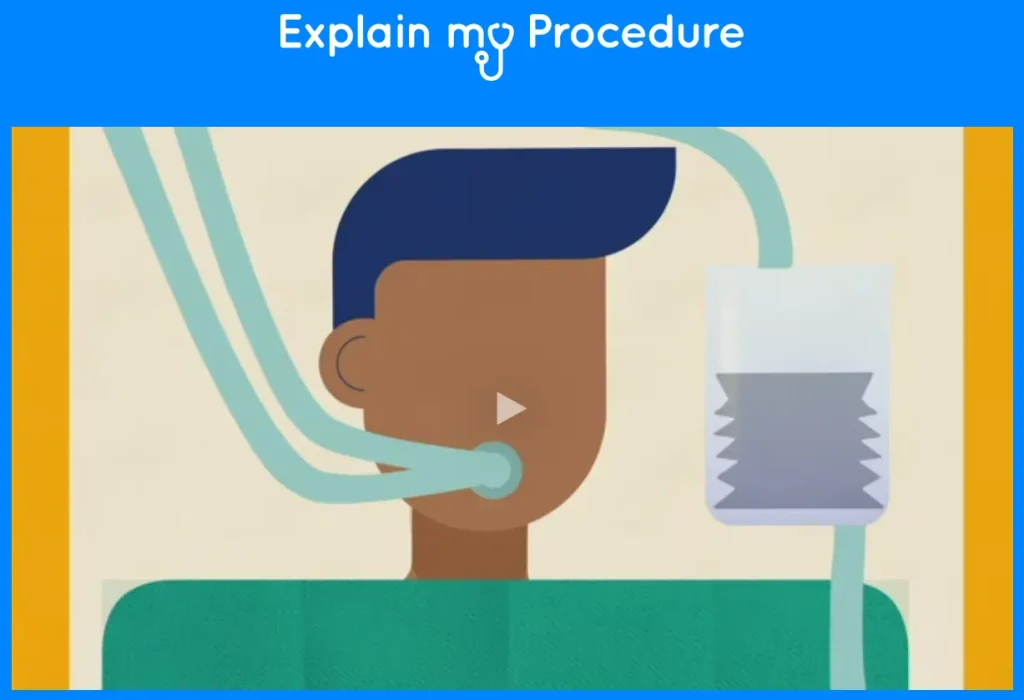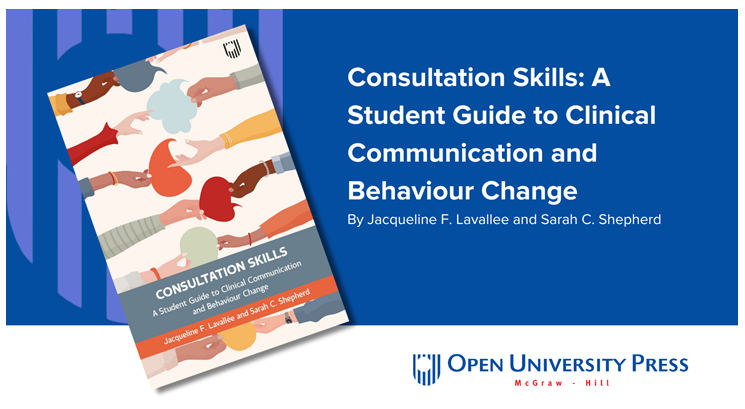Publications and resources for clinical communication skills teaching.
Listed here are the publications and resources created by the UKCCC to help medical schools, teachers and medical students in all aspects of clinical communication skills. We have also linked to useful external resources, journal papers and books.
UKCCC Publications
Journal Papers
Clinical communication is a core component of undergraduate medical training. A consensus statement on the essential elements of the communication curriculum for medical students was co-produced in 2008 by the communication leads of UK medical schools.
The key domains of clinical communication teaching are outlined both in this statement and the curriculum wheel and based on over 30 years of accumulated research, and underpinned by principles of professionalism, ethics, evidence-based and reflective practice.
Citation: Noble, L. M., Scott-Smith, W., O’Neill, B., & Salisbury, H. (2018). Consensus statement on an updated core communication curriculum for UK undergraduate medical education. Patient Education and Counseling, 101(9), 1712–1719. https://doi.org/10.1016/j.pec.2018.04.013

What if the patient reads this? A student guide to writing in the GP electronic patient record.

It is common practice for senior medical students in UK General Practice to enter details of their consultations into the electronic patient record (EPR). There is evidence that medical students benefit educationally from writing in patient records through learning how to make good clinical entries and enhancing their clinical reasoning
Citation: Sprake, S., Sprake, C., Brown, J., Lister, J., Gormley, S., Sykes, S. C., & Kelly, W. (2024). What if the patient reads this? A student guide to writing in the GP electronic patient record. Education for Primary Care, 1–6. https://doi.org/10.1080/14739879.2024.2435613
National survey of clinical communication assessment in medical education in the United Kingdom (UK)
All medical schools in the UK are required to be able to provide evidence of competence in clinical communication in their graduates. This is usually provided by summative assessment of clinical communication, but there is considerable variation in how this is carried out. This study aimed to gain insight into the current assessment of clinical communication in UK medical schools.
Citation: Laidlaw, A., Salisbury, H., Doherty, E. M., & Wiskin, C. (2014). National survey of clinical communication assessment in medical education in the United Kingdom (UK). BMC Medical Education, 14, 10. https://doi.org/10.1186/1472-6920-14-10
UK consensus statement on the content of communication curricula in undergraduate medical education
The teaching and assessment of clinical communication have become central components of undergraduate medical education in the UK. This paper recommends the key content for an undergraduate communication curriculum. Designed by UK educationalists with UK schools in mind, the recommendations are equally applicable to communication curricula throughout the world.
Citation: von Fragstein, M., Silverman, J., Cushing, A., Quilligan, S., Salisbury, H., & Wiskin, C. (2008). UK consensus statement on the content of communication curricula in undergraduate medical education. Medical Education, 42(11), 1100–1107. https://doi.org/10.1111/j.1365-2923.2008.03137.x
The doctor’s ability to communicate effectively (with patients, relatives, advocates and healthcare colleagues) relates directly to health outcomes, and so is core to clinical practice. The remediation of medical students’ clinical communication ability is rarely addressed in medical education literature. There is nothing in the current literature reporting a contemporary national picture of how communication difficulties are managed, and the level of consequence (progression implications) for students of performing poorly. This survey aimed to consolidate practices for identifying and processes for managing medical students who ‘fail’ communication assessments across all UK medical schools.
Citation: Wiskin, C., Doherty, E. M., von Fragstein, M., Laidlaw, A., & Salisbury, H. (2013). How do United Kingdom (UK) medical schools identify and support undergraduate medical students who “fail” communication assessments? A national survey. BMC Medical Education, 13(1), 95. https://doi.org/10.1186/1472-6920-13-95
The UK Council for Clinical Communication is a forum for all UK medical schools, meets twice yearly and has a tradition of sharing teaching ideas, evaluations and materials. At the start of the COVID pandemic we all faced the sudden imperative to change to remote or socially distanced learning
Citation: Lefroy, J. (2023). O.36.5 – The value of sharing between institutions: The UKCCC’s response to COVID. Patient Education and Counseling, 109(Suppl.), 140. https://doi.org/10.1016/j.pec.2023.04.036
Resources

Download the Student Guide to writing in the Electronic Patient Record (EPR)
Members of the UK Council for Clinical Communication (UKCCC) Electronic Patient Record (EPR) writing group for educators, healthcare professionals and students have produced a medical student guide to writing in the EPR. The EPR guide helps medical students to write good quality entries, which fulfil the need of clinical communication, are medico-legally appropriate, and have the patient in mind, who is entitled to access their records. The medical student guide to writing in the EPR can be downloaded and distributed for practice and teaching.
Books
Clinical Communication in Medicine brings together the theories, models and evidence that underpin effective healthcare communication in one accessible volume. Endorsed and developed by members of the UK Council of Clinical Communication in Undergraduate Medical Education, it traces the subject to its primary disciplinary origins, looking at how it is practised, taught and learned today, as well as considering future directions.
Focusing on three key areas – the doctor-patient relationship, core components of clinical communication, and effective teaching and assessment – Clinical Communication in Medicine enhances the understanding of effective communication. It links theory to teaching, so principles and practice are clearly understood.
Clinical Communication in Medicine is a new and definitive guide for professionals involved in the education of medical undergraduate students and postgraduate trainees, as well as experienced and junior clinicians, researchers, teachers, students, and policy makers.
Jo Brown, Jane Kidd, Lorraine Noble (Ed.), Clinical Communication in Medicine. (2015) Wiley.

External resources and publications
Journal Papers
Leicester Medical School – A collaboration on teaching communication by text
Since the start of the pandemic, text based communication with patients has become increasingly common. Leicester Medical School introduced experiential teaching in this field in 2014 but identified a need to develop teaching on the key skills required for effective consultations.
Resources
Generic Consultation Skills toolkit
Keele University have produced the Generic Consultation Skills (GeCoS). It is an assessment tool for formative (workplace based assessment) and summative (OSCE) assessment of medical consultations with patients.
University of Bristol – COG Connect
COGConnect is a visual resource for teaching and learning 21st Century consultation skills. With its tag line of “Connection. Cognition. Care”, it reminds learners and teachers that consulting is a whole-person commitment of head, heart and hand.
This toolkit is intended to support all who design and deliver teaching within medical education in considering how equality, diversity and inclusion (EDI) can be increasingly embedded throughout the medical curriculum. The toolkit covers four themes with a set of questions and suggested actions for each area, designed to support reflection and development of what we teach medical students and how we teach it.
Animations to support communication, understanding and consent in medicine. Explain my Procedure supports shared-decision making in medicine. Every person’s circumstances are different and whilst they do not give individualised advice, the animations provide general information and are a starting point for discussion with the healthcare team. By providing animations in multiple languages (English, Bengali, Polish, Hindi, Punjabi, Gujarati, Urdu, Tamil, Turkish, Arabic, Nepali and Welsh) – all done by medically trained translators, Explain my Procedure seeks to be inclusive and empowering.
Click the image to see an example video on the EMP website.
Further reading:

Books
Consultation Skills: A Student Guide to Clinical Communication and Behaviour Change
This textbook blends the theories of behaviour change with practical clinical communication and motivational interviewing skills, enabling students to understand the theoretical foundations and know how to apply them in real-world healthcare scenarios. Bringing together clinical communication skills and behaviour change in one source, this book eliminates the need for students to refer to multiple sources, thus streamlining their learning process and providing a holistic understanding of these topics. Consultation Skills will also remain a useful reference guide for students after qualification, as they embark in their professional careers.
Lavallée, J. F., & Shepherd, S. C. (2024). Consultation skills: A student guide to clinical communication and behaviour change. McGraw-Hill Education.


Contact Us

